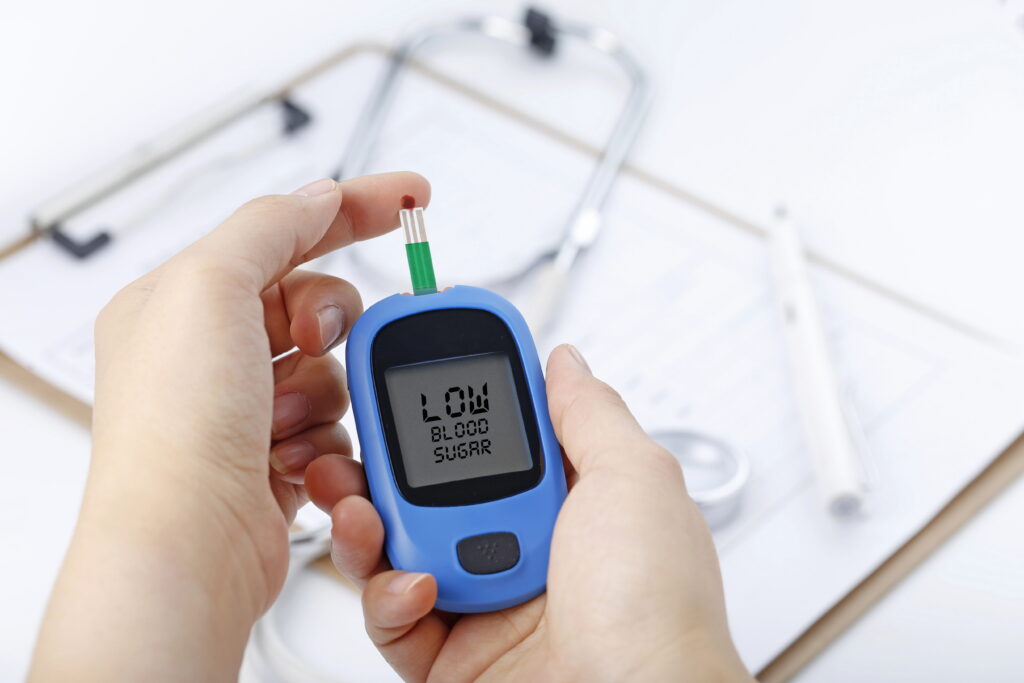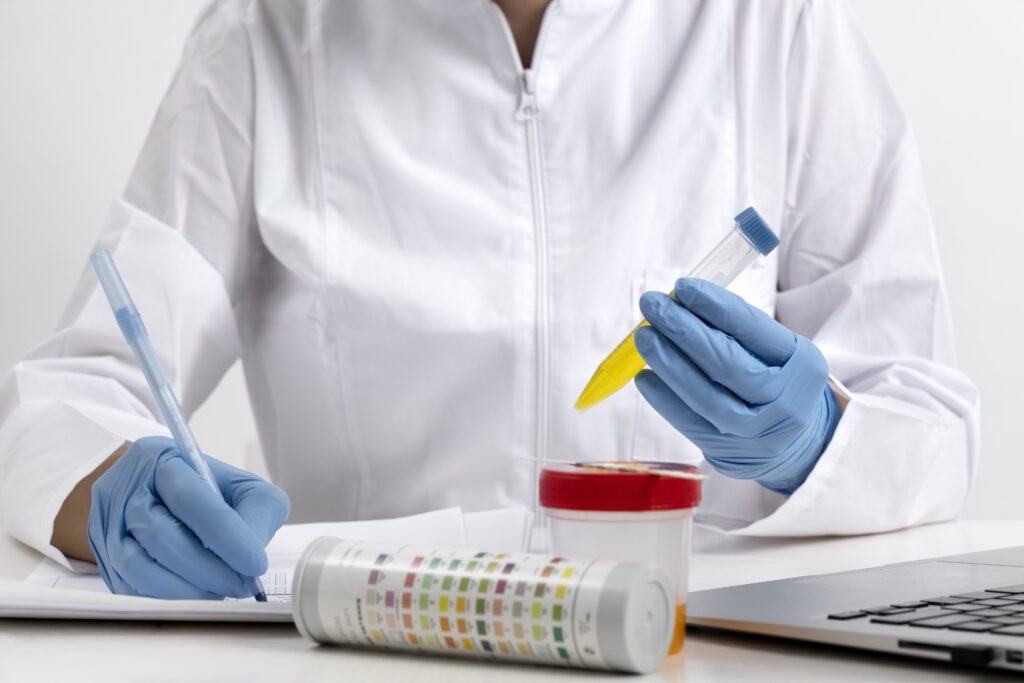What is lactose intolerance?
Milk sugar or Lactose is a type of disaccharide composed of glucose and galactose. Milk has 3 to 6% of lactose by mass. Its name has been derived from the Latin word for milk, lact, and a suffix as -ose to denote it as sugar. This compound has a sweet taste and is used in making food items. It is non-hygroscopic, water-soluble, and white in color. Its indigestion is known as Lactose Intolerance.
Now let’s talk about lactose intolerance! When your digestive system reacts against lactose sugar, found in milk. Lactose intolerance causes uncomfortable feelings after you eat or drink dairy products prepared with milk or its derivatives. People who have difficulty digesting lactose products are called lactose intolerant people. Some people have lactose intolerance but it is bearable and they don’t notice its symptoms. If you have lactose intolerance, this blog article is for you buddy.
Lactose Malabsorption
The inability to break down and digest lactose molecules properly in your digestive tract is called lactose malabsorption. Most of the people suffer from this condition. According to research, 60% of the adult population worldwide can’t absorb lactose completely. Therefore, people feel it is difficult to digest and absorb lactose and pass it in undigested form through their gastrointestinal tract. This indigestion also causes severe symptoms.
Lactose Intolerance VS. Lactose Malabsorption-The Difference
Lactose malabsorption is not linked with lactose intolerance because it is not necessary that if you have lactose malabsorption then you also have lactose intolerance. However, lactose intolerance does cause lactose malabsorption. It’s because lactose malabsorption happens in your small intestine but the symptoms appear in your large intestine as lactose intolerance. The small intestine is the exact part of your digestive tract where your food is completely digested or assimilated. The small intestine has enzymes and techniques to break down the food into smaller particles so that these particles can easily pass through intestinal walls to get absorbed into your bloodstream. Then the undigested or waste part of your food is transferred to the large intestine.
In the large intestine, the undigested food or sugar molecules produce more gas and water. Thus triggering your large intestine to secrete extra-intestinal fluid to ease the passing process of undigested food. Gas produced by the sugar particles is fermented by the bacteria found in your colon and causes digestive health issues including diarrhea, vomiting, and gas trouble.
Other variables to evaluate the noticeable symptoms of lactose intolerance include:
- Can you break a lactose molecule a little bit or not?
- How much lactose do you take in a regular meal?
- Which factors affect the gas and water content in your large intestine?
These factors help your healthcare provider to explore your stage of lactose intolerance.
Causes and Symptoms
The use of dairy products causes digestive discomfort in the form of gas trouble or abdominal pain. More symptoms and signs of lactose intolerance are:
Signs and Symptoms
- Cramping or pain in your stomach.
- Gas accumulation in your intestine.
- Bloated stomach.
- Rumbling stomach.
Undigested lactose in your large intestine is the main cause of these symptoms. After eating food, it takes eight to twelve hours for food to reach your large intestine and more than 24 hours to travel out of the large intestine. Therefore, symptoms of lactose intolerance usually appear after a day or two of taking a lactose-containing food. Foods Triggering Lactose Intolerance: Most dairy products have lactose. Lactose is an essential part of every dairy product and you don’t eat any dairy product without lactose unless it is removed through technical methodologies. Various dairy products having lactose are cow milk, goat milk, hard cheese, fresh milk, and cream.
Foods Triggering Lactose Intolerance: Most dairy products have lactose. Lactose is an essential part of every dairy product and you don’t eat any dairy product without lactose unless it is removed through technical methodologies. Various dairy products having lactose are cow milk, goat milk, hard cheese, fresh milk, and cream.
However, people with high sensitivity to lactose products might react to even small amounts of it. Thus it is suggested by nutritionists that it is a habit to check nutrition labels and ingredient lists on food packaging. This will help you avoid foods that contain lactose and trigger lactose intolerance. Usually processed foods like snacks, salad dressings, and soups contain l; lactose. Even some prescribed medicines also have lactose.
Causes of Lactose Intolerance
Nutritionists and dietitians agree that lactose intolerance is caused due to two major factors, Gut Sensitivity and Lactose Malabsorption. Out of these the inability to break down and assimilate the lactose molecules (lactose malabsorption) is more important because it triggers the symptoms more severely.
Role of Lactase Deficiency: Lactase is a specific digestive enzyme that breaks down the lactose molecules in your small intestine to make them absorbable for the walls of the small intestine. Lactase is naturally produced in your small intestine during your infancy to help digest breastfeeding but some people stop to make it more when they grow up. Therefore, if you have a lack of lactase enzyme in your small intestine, you won’t be able to digest it properly. It is called lactase deficiency and a large number of people are victims of this deficiency, all over the world. A very small number of people retain the ability to produce enough amounts of lactase in their adulthood.
Your Gut and Lactose Intolerance: Your gut is the part of your digestive system where the matter starts. Your gut sensitivity initiates intolerance for dairy products. You eat different foods that your gut occasionally can’t digest and most sugars or dietary fibers go straight through your digestive tract to feed the bacteria living in your gut. Often you can tolerate the discomfort because it is not overwhelming. Sometimes your genes, sensitivities, diet, and intestinal health are different from others and you can’t take lactose intolerance as a normal routine matter. Bacteria living in your gut and colon process the lactose differently. Thus your symptoms will guide you on how much lactose is tolerable for you.
Types of Lactose Intolerance
The main constituents of lactose are galactose and glucose. Enzyme Lactase breaks these large molecules into smaller ones. Your body absorbs these smaller units and gets energy from these molecules. Insufficient lactase causes undigested lactose to move through your gut and thus you suffer from digestive problems. So the causes of lactase deficiency must be in your knowledge.
Different types of lactose intolerance with their causes are here for your convenience.
- Primary lactose intolerance
- Secondary lactose Intolerance
- Congenital lactose Intolerance.
- Developmental lactose Intolerance.
Primary Intolerance
It is caused by diminishing lactase production with age. As the time passes your ability to absorb lactose decreases. This type of intolerance also has genetic roots as it is more common in some populations than others. Studies reveal that people in Africa and Asia are more likely to get lactose intolerance as compared to people who live in European countries.
Secondary Intolerance
If you get any injury or disease in your small intestine, you may suffer from lactose intolerance. Sometimes an inflammation in the walls of the gut causes a decrease in the production of lactase. Thus causing lactose intolerance temporarily. Crohn’s disease, celiac disease, aging, ulcerative colitis, and chemotherapy are possible causes of secondary lactose intolerance.
Congenital Intolerance
If you are lactase deficient by birth then you have congenital type of lactose intolerance. It means this type of intolerance is found in newborns. As its name refers, in this condition both parents would have particular gene mutations that are transferred to the newborn. This is a fatal condition for babies because infants with congenital lactose intolerance are unable to nurse due to lactose found in breast milk. It must be caught quickly to save the life of that baby.
Developmental Intolerance
At the time of fetal development, if the small intestine of the fetus remains underdeveloped due to premature birth, the newborn will be affected by developmental lactose intolerance. This type also occurs in infants and newborns. As this condition happens due to premature birth, it typically resolves on its own with the growth of the infant until that recovery phase baby would be fed on lactose-free formula rather than breast milk.
Risk Factors
Lactose intolerance has the following risk factors for people who have an increased risk of being infected by lactose intolerance:
- Genetic digestive problems or disease.
- Lactose intolerant relatives.
- African or Asian heritage.
 Does Lactose Intolerance have a genetic Basis?
Does Lactose Intolerance have a genetic Basis?
Your genetic makeup has specific genes that determine how likely you are to continue to produce lactase, an enzyme that helps you to digest and assimilate lactose. Genes control your gut sensitivity and are also responsible for deciding the type of bacteria you have in your gut. Gut microbiomes consist of two types of bacteria, the first type can cause gas in your intestine but the other one converts lactose into lactic acid that is not harmful to you. People with some specific genetic profiles like Hispanic, Native American, or Asian are more likely to have lactose intolerance or lactose malabsorption. In addition, if your genetic profile matches the Middle East, Africa, or Northern Europe, you may be more likely to have lactase persistence and lactose tolerance. Sometimes, people are born with congenital lactase deficiency. Thus it proves that lactose intolerance is a genetic disorder that may be caused from birth.
Does Lactose Intolerance Develop Over Time?
Although lactose intolerance has a genetic basis, most people develop it as they grow from childhood into adulthood. Primary lactose intolerance, the most common type of lactose intolerance, happens due to a sudden stoppage of lactase production, the enzyme specific to digest lactose. Sometimes your gut sensitivity and the type of microbiome in your gut also change your gut sensitivity. Excluding lactose malabsorption, you may experience symptoms if you have:
- Bacterial overgrowth in your small intestine.
- Irritable bowel syndrome.
- Visceral hypersensitivity.
Remember that all the above-mentioned conditions tend to develop gradually over your lifetime. Therefore, when you suddenly feel lactose intolerance, if you weren’t before, you may have developed secondary lactose intolerance as a result of injury, surgery, infection, or any damage to your small intestine. The damage in your small intestine causes lactose malabsorption and intolerance, even if you have not had it before.
Causes of secondary lactose intolerance include:
- Inflammatory bowel disease.
- Celiac disease.
- Small bowel resection.
- Cystic fibrosis.
- Radiation therapy.
Secondary intolerance is not a permanent condition. Recovering The usual function of the small intestine can help you to regain the ability to digest lactose.
Diagnosis of Lactose Intolerance
Gastrointestinal symptoms after eating dairy products are a noticeable pattern of lactose intolerance. Sometimes, you can digest some amount of lactose despite lactase deficiency. So determining whether you are lactose intolerant or not, is not as simple as you think. You should visit a healthcare provider to diagnose if you are lactose intolerant or not.
Tests Diagnosis
Your healthcare provider uses several ways to test you for lactose intolerance. Common tests are: Blood Sugar Test: Through this test, the amount of sugar in your blood is measured before and after ingesting lactose. If your blood sugar is not going to higher levels, it means you are not digesting lactose.
Blood Sugar Test: Through this test, the amount of sugar in your blood is measured before and after ingesting lactose. If your blood sugar is not going to higher levels, it means you are not digesting lactose.
Hydrogen Breath Test: Measuring hydrogen and methane gasses in your breath when you exhale, is another way to diagnose if you are a lactose intolerant. Higher levels of these gasses in your breath after ingesting lactose is a sign of fermentation of lactose in your gut by gut bacteria and producing gas in your colon. Stool Acidity Test: For small children and infants this test is carried out. The poop sample of an infant is analyzed after feeding the child lactose. Higher levels of lactic acid in stool samples with some byproducts are a sign of malabsorption of lactose in the body.
Stool Acidity Test: For small children and infants this test is carried out. The poop sample of an infant is analyzed after feeding the child lactose. Higher levels of lactic acid in stool samples with some byproducts are a sign of malabsorption of lactose in the body.
Conclusion
Deficiency of lactase, an enzyme that breaks down the milk sugar called lactose, causes a set of symptoms of lactose intolerance. If you have this condition, the symptoms of lactose intolerance may appear after eating dairy products like milk, cheese, yogurt, and chocolate. Abdominal pain and diarrhea are the major symptoms of lactose intolerance.
This condition can be managed in many ways including adjusting your diet to avoid or limit lactose. You can do it by buying lactose-free foods.
If you want to get rid of lactose intolerance, you ignore numerous foods and beverages that contain lactose. Experiments with lactic acid bacteria also have proven a source to convert lactose into lactic acid instead of gas. So ingesting these bacteria as probiotics, with prebiotics may improve the condition. Along with these suggestions, there are several treatment options to help alleviate or prevent the symptoms.







